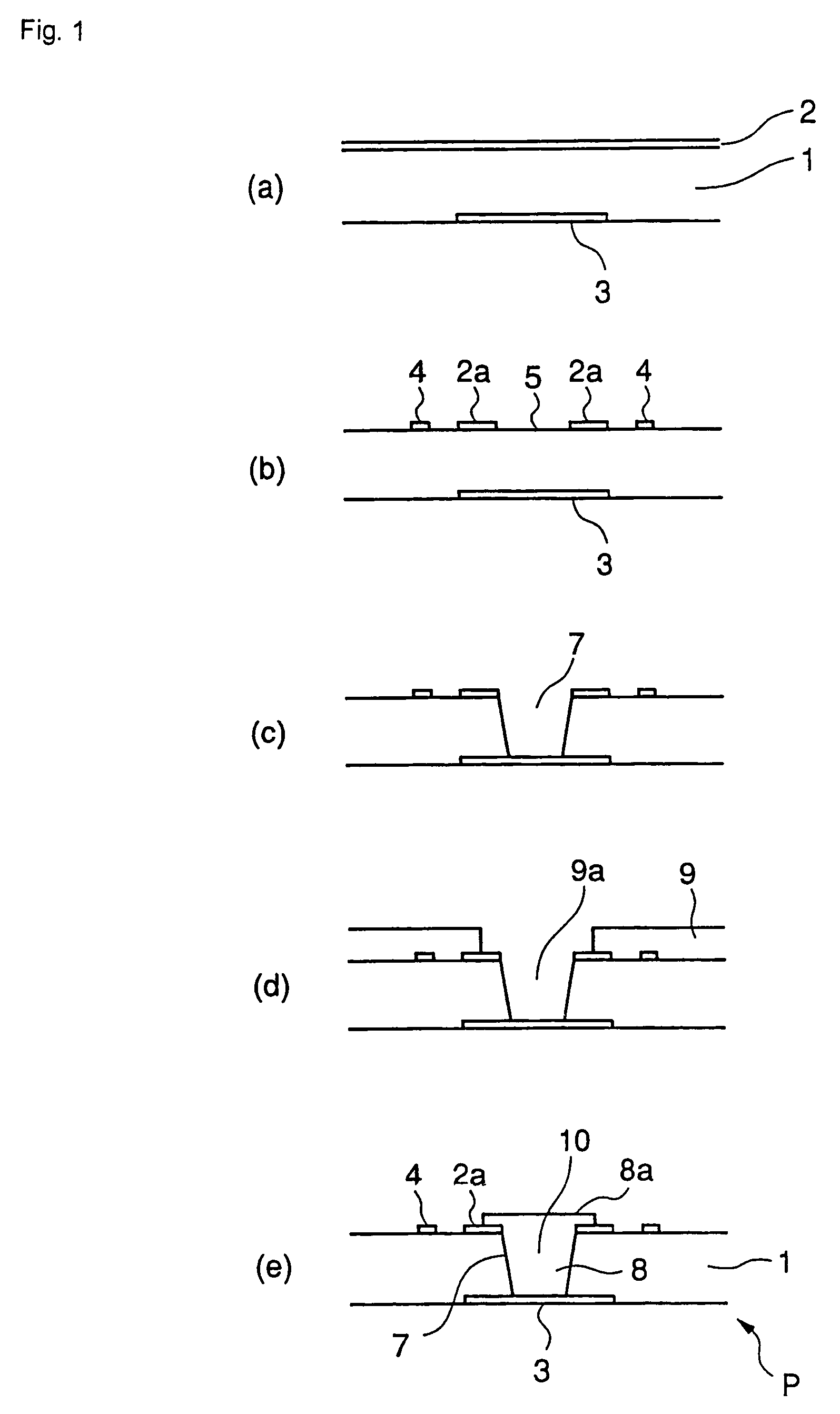Printed wiring board and method of manufacturing the same
a printing method and wiring board technology, applied in the direction of manufacturing tools, etching metal masks, printing element electric connection formation, etc., can solve the problems of difficult to form a good circuit, difficult to achieve good circuits, and inconvenient subtractive methods, so as to achieve high-density wiring designs, reduce the diameter of the land, and achieve easy high-density wiring designs.
- Summary
- Abstract
- Description
- Claims
- Application Information
AI Technical Summary
Benefits of technology
Problems solved by technology
Method used
Image
Examples
examples
[0079]An embodiment of the present invention will be described with reference to FIGS. 5(l) to 5(h). Incidentally, a printed wiring board was fabricated in accordance with design specifications of line / space=30 μm / 30 μm.
[0080]Resin-including copper foil constituted by an insulating layer having a thickness of 60 μm and copper foil having a thickness of 12 μm was laminated on a core substrate on which a lower-layer wiring pattern is formed (equivalent to FIG. 5(a)) and a dry film for etching resist (made by Asahi Kasei Corporation: SPG 102) was laminated.
[0081]Next, by performing usual exposure and development (a 1% sodium carbonate aqueous solution) and etching (etchant: use of ferric chloride), an upper-layer wiring pattern (line 30 μm / space 30 μm), a metal foil (copper foil) land (φ150 μm) and a window portion (φ70 μm) were respectively formed (equivalent to FIG. 5(b))
[0082]Next, in order to suppress the deterioration of a bath of desmear treatment liquid during later desmear trea...
PUM
| Property | Measurement | Unit |
|---|---|---|
| size | aaaaa | aaaaa |
| diameter | aaaaa | aaaaa |
| diameter | aaaaa | aaaaa |
Abstract
Description
Claims
Application Information
 Login to View More
Login to View More - R&D
- Intellectual Property
- Life Sciences
- Materials
- Tech Scout
- Unparalleled Data Quality
- Higher Quality Content
- 60% Fewer Hallucinations
Browse by: Latest US Patents, China's latest patents, Technical Efficacy Thesaurus, Application Domain, Technology Topic, Popular Technical Reports.
© 2025 PatSnap. All rights reserved.Legal|Privacy policy|Modern Slavery Act Transparency Statement|Sitemap|About US| Contact US: help@patsnap.com



